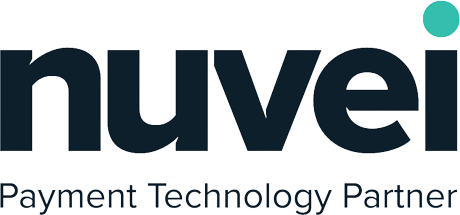Supply-Chain Data Protection
Agentless control of sensitive data, even after it leaves your network.

Go Beyond Legacy Solutions
We at GlobalDots hunt for the most cutting edge and relevant technologies out there.
Once tested and found qualified we bring you the most certified innovative products out there for every pressing use case.

Your Benefits
It’s hard to keep track of all the sensitive documents employees share externally. Automated supply-chain data protection solution can provide granular visibility across the various business units in the company.

 Compliant Collaboration
Compliant Collaboration
Keep collaborating with your partners and vendors while staying compliant with security standards as you have full visibility and control of all sensitive data shared with 3rd parties.

Even after the data leaves the organization, you have full control over the documents including revoking access per vendor, document or time limit.

A simple add-on to Outlook can enable employees to easily harden company data sharing policies. Authorized users can then safely access shared documents on their preferred platform: offline Office, Google Docs, or Office365.

-
Can I switch between vendors if I’m not satisfied with one of them?
Yes, one of the main advantages of working with GlobalDots is that we have relationships with multiple vendors per solution category, so our customers can switch between vendors if they would like to. Moreover, we will proactively offer better vendors if we see the value for the customers in terms of features, capabilities or price.
-
What does support look like when working with GlobalDots?
Our solutions architects, engineers and DevOps experts have hands-on experience with the solutions we resell and integrate. Our engineers work with you to resolve any issue to your satisfaction, and never leave you hanging. If needed, we’ll be the ones to engage directly with the vendor, so you don’t have to.
-
How does GlobalDots keep up with the latest technologies in the market?
The people working at GlobalDots live and breath technology. We have relationships with all the cool startups and always seeking new vendors with innovative tech to offer to our customer base. We research and explore emerging technologies on a weekly and daily basis, we filter out the noise and focus only on the promising solutions we vetted that will bring the most value to our customers.
-
What is supply chain security?
In the context of cybersecurity, supply chain security focuses on mitigating risks associated with the interconnected network of suppliers, manufacturers, logistics providers, and even the end users who play a role in the creation and distribution of a product. A single vulnerable link in the supply chain can compromise the entire system, leading to severe financial, reputational, and operational damage. Cybercriminals often target weaker suppliers as a backdoor into larger organizations, making supply chain security a critical focus area for businesses across all sectors. Supply chain security is essential not only for protecting an organization’s assets but also for ensuring trust with customers and partners. In industries such as defense, healthcare, and technology, where the stakes are particularly high, robust supply chain security practices are a non-negotiable requirement for maintaining compliance and securing sensitive operations.
-
How to secure the supply chain?
Securing the supply chain is a multifaceted challenge that requires a holistic approach. By implementing strong security measures, continuously monitoring the supply chain, and fostering a culture of security awareness, organizations can significantly reduce the risks associated with supply chain threats. Here’s a feasible approach on how to secure the supply chain:
- Supplier Management: Leveraging due diligence to conduct rigorous background checks and security assessments on all suppliers and partners. This includes reviewing their security policies, practices, and past incidents to ensure they meet your organization’s security standards. continuously monitor and audit suppliers to ensure ongoing compliance with security policies.
- Implement Role-Based Access Control (RBAC): Ensure that only authorized personnel have access to sensitive systems and data. Implement RBAC across the supply chain to limit access based on job roles and responsibilities. Add an additional layer of security by requiring multiple forms of verification.
- Code Signing and Verification: Use digital signatures to verify the integrity and origin of software code and firmware throughout the supply chain. This helps prevent tampering or the introduction of malicious code.
- Leverage Automation and Security Tools: Integrate security into Continuous Integration/Continuous Deployment (CI/CD) pipelines to automate security checks throughout the software development lifecycle. Tools like SAST (Static Application Security Testing), DAST (Dynamic Application Security Testing), and dependency scanning can be used to identify vulnerabilities early. Use infrastructure as code securely. Implement security policies as code to enforce security controls across the infrastructure.
- Develop Incident Response Plans: Create detailed incident response plans that outline the steps to take in the event of a supply chain security breach. These plans should include clear communication protocols, roles and responsibilities, and recovery strategies. Furthermore, conduct regular drills and simulations to test the effectiveness of your incident response plans. Update these plans based on lessons learned from exercises and real incidents.
- Diversify Suppliers and Ensure Regulatory Compliance: Avoid relying on a single supplier for critical components or services. Diversifying your supplier base can reduce the risk of a single point of failure in your supply chain. Stay compliant with relevant regulations and standards that apply to your industry. This includes ensuring that all supply chain partners adhere to these regulations.
-
What is SBOM?
Software Bill of Materials (SBOM) is a comprehensive list that details all the components, libraries, dependencies, and other elements that make up a software application. It’s essentially an inventory that provides transparency into the software’s composition, allowing organizations to understand what exactly is inside the software they are using, developing, or purchasing. By providing a detailed inventory of all software components, an SBOM allows organizations to manage risks more effectively, ensure compliance with licensing requirements, and respond to security incidents with greater precision. With the increasing emphasis on software security and supply chain risk management, SBOMs are becoming a regulatory requirement in some sector.
Key components of SBOM are:- Component Name: The name of each software component included in the application.
- Version Information: The specific version number of each component, which is crucial for identifying vulnerabilities or outdated software.
- Origin: Information about where each component was sourced from, including open-source repositories, third-party vendors, or proprietary libraries.
- Licensing Information: Details about the licensing of each component, which is essential for legal compliance, especially when using open-source software.
- Dependency Information: A breakdown of dependencies between components, including nested dependencies (dependencies of dependencies), which can help identify potential security risks.
- Hash Values: Cryptographic hashes of components to ensure their integrity and authenticity. This can help verify that a component hasn’t been tampered with.
-
How to Create and Manage an SBOM?
There are tools and platforms available that can automatically generate and manage SBOMs as part of the software development lifecycle. Organizations can integrate SBOM generation into their Continuous Integration/Continuous Deployment (CI/CD) pipelines to ensure that every build is accompanied by an up-to-date SBOM.
It’s fundamental to regularly update SBOM to reflect changes in the software, such as the addition of new components, updates to existing ones, or removal of deprecated libraries.
-
What is PBOM?
A PBOM (Pipeline Bill of Materials) extends the concept of an SBOM by providing a real-time, comprehensive overview of the entire software lifecycle, from the first line of code to production. Unlike the static nature of an SBOM, a PBOM dynamically tracks every stage of the software pipeline, ensuring the integrity and security of every build. It includes detailed records of pipeline branches, builds, security tool results, and more, offering full visibility and traceability to minimize the software supply chain’s attack surface.
















